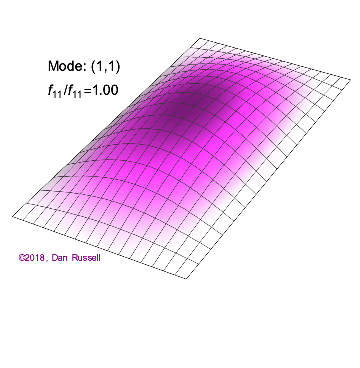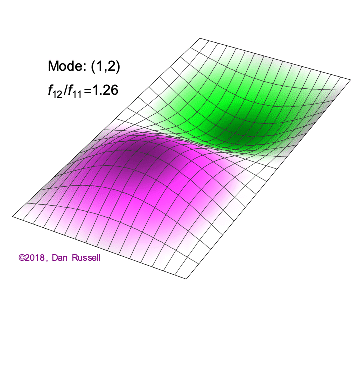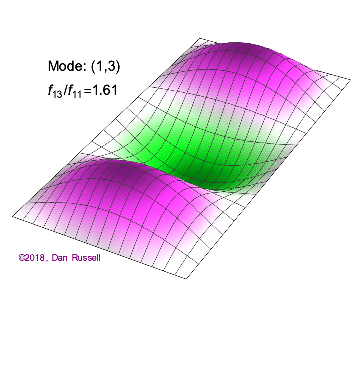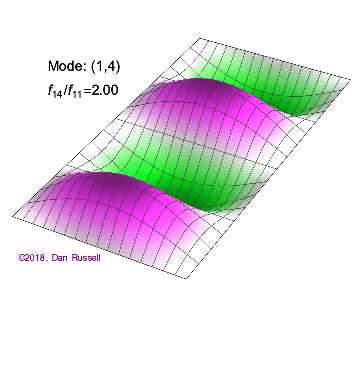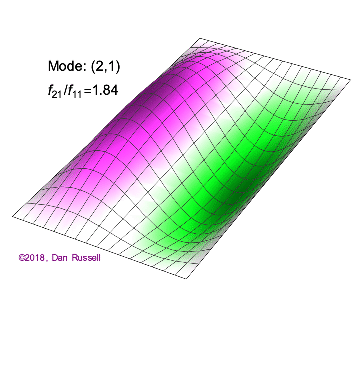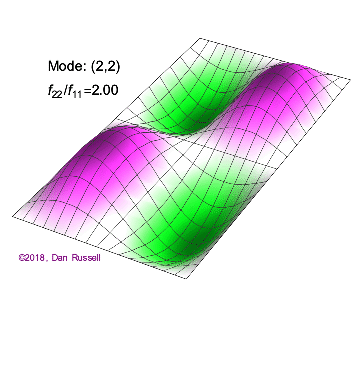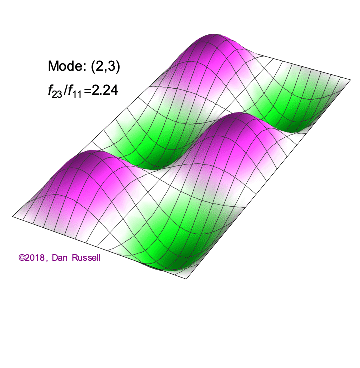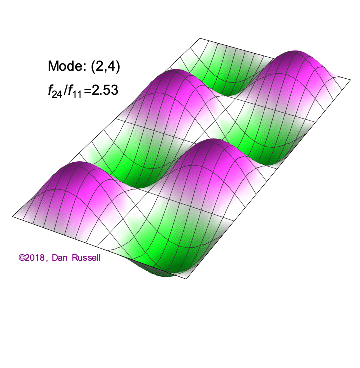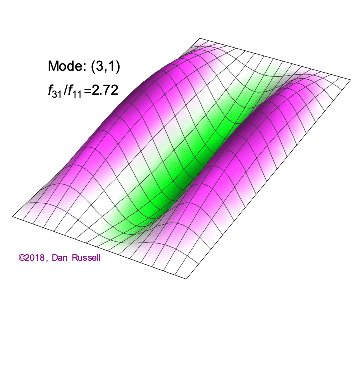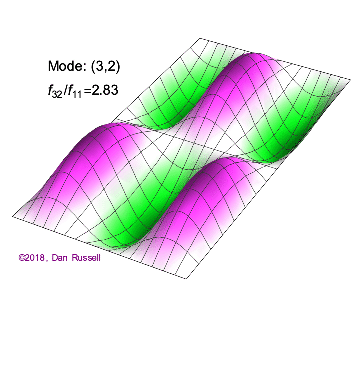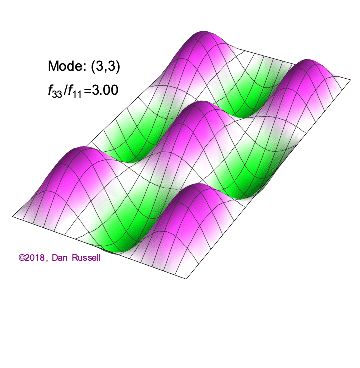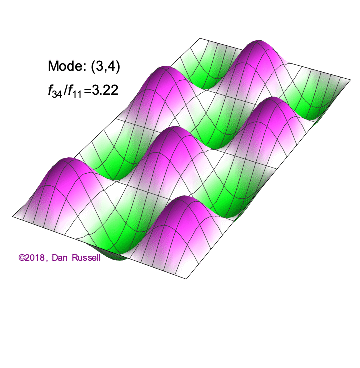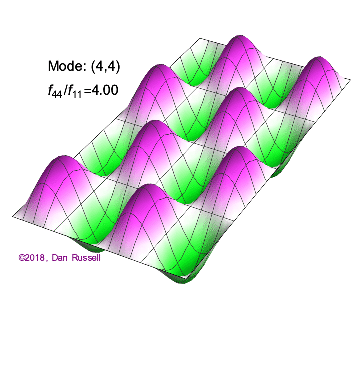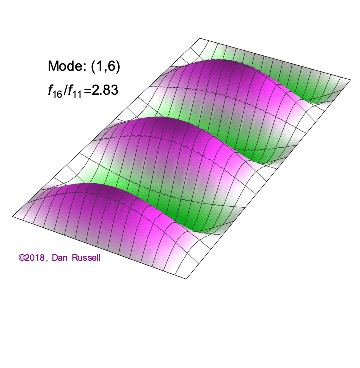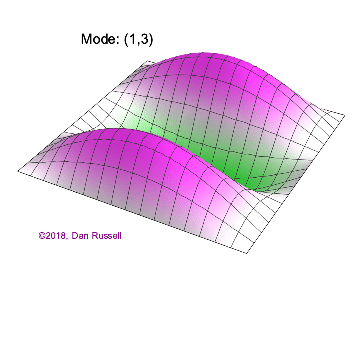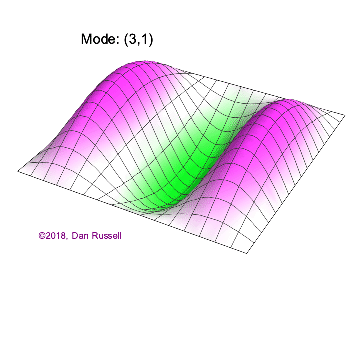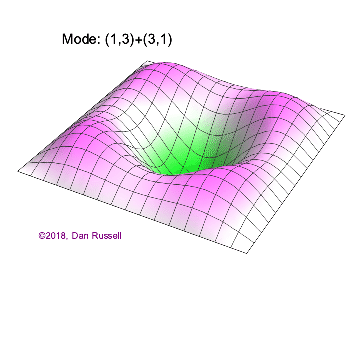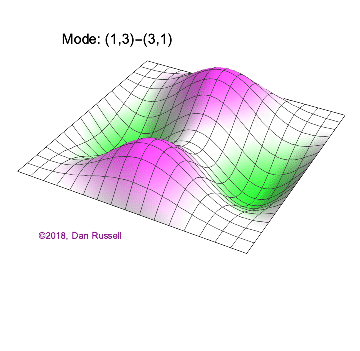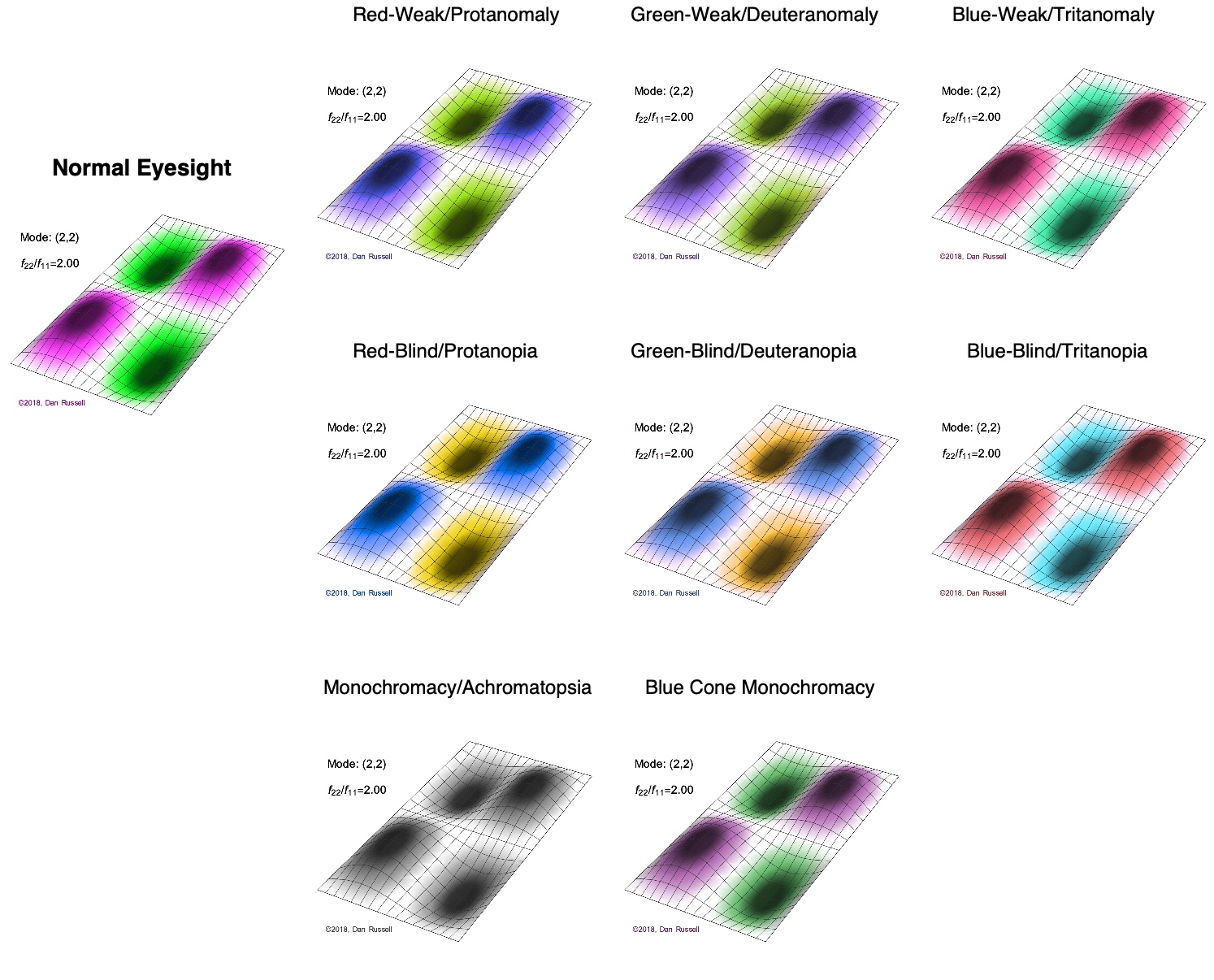Vibrational Modeshapes of a Rectangular Membrane (fixed at the edges)
The mode shapes (standing wave vibrational patterns) for a rectangular membrane of width $L_x$ and length $L_z$, and which is fixed along all four edges, are given by $$ \Psi_{mn}(x,z) = \sin\bigg({m \pi \over L_x}x\bigg)\sin\bigg({n \pi \over L_z}z\bigg) \ .$$ The mode shape identifier (m,n) refers to the number of humps (antinodes) in the x and z directions, respectively. The number of nodal lines in a given direction is one less than the corresponding mode number. The natural (resonance) frequency for the (m,n) mode is $$ f_{mn}= {c \over 2}\sqrt{\bigg({m \over L_x}\bigg)^2 + \bigg({n \over L_z}\bigg)^2} \ . $$ Notice that the frequencies are strongly dependent on the dimensions (width and length) of the membrane. The same mode shape (m,n) could have a very different frequency if the dimensions of the membrane change.
Mode shapes for a Rectangular Membrane with $L_z = 2\,L_x$
